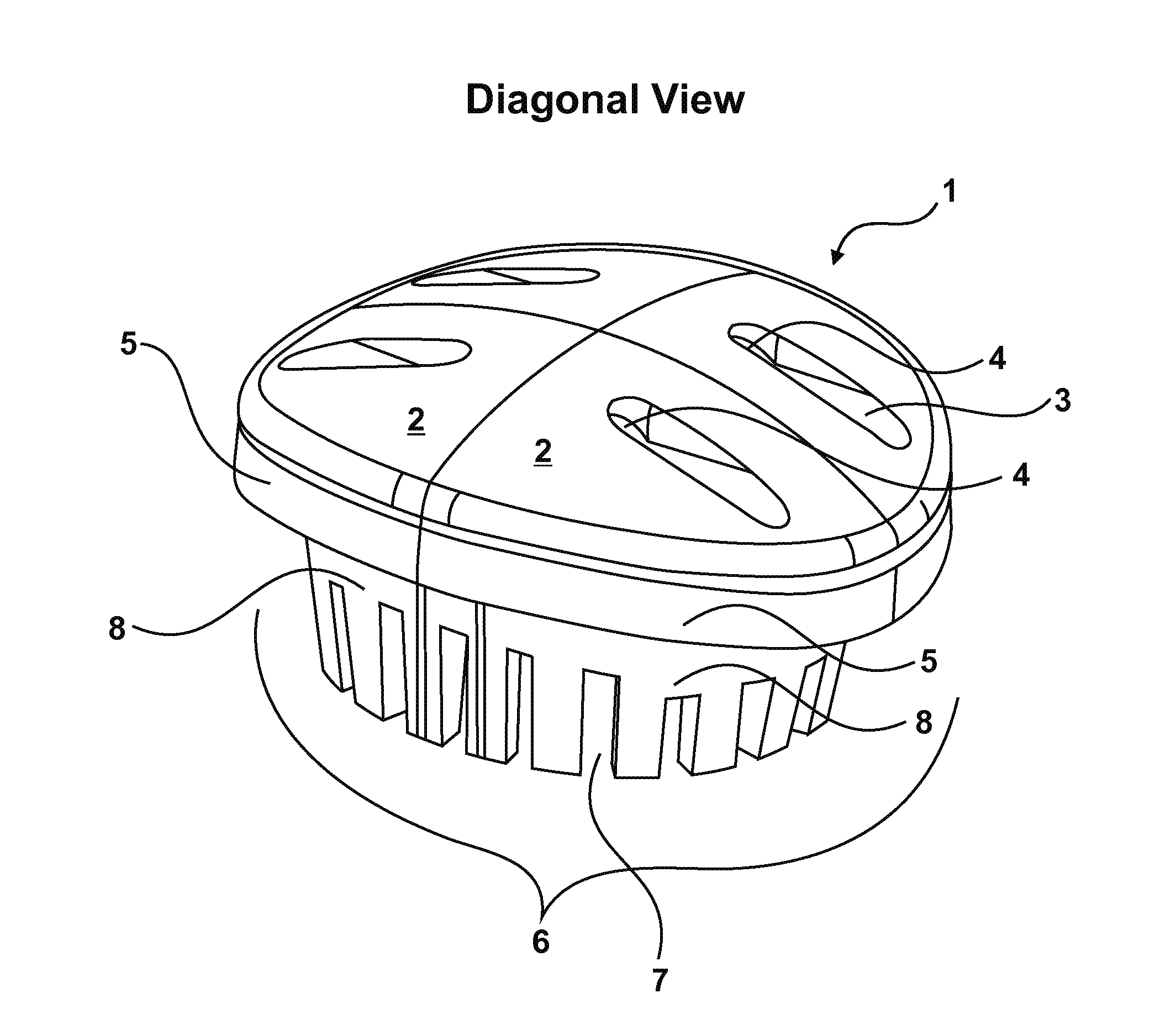Dental devices for extraction site reconstruction
a technology for extraction site and dental implants, applied in dental surgery, bone implants, medical science, etc., can solve the problems of affecting the healing effect of the extraction socket, and the current membrane is flat, so as to improve the bone and tissue, enhance general healing, and maintain the integrity of the alveolar ridge.
- Summary
- Abstract
- Description
- Claims
- Application Information
AI Technical Summary
Benefits of technology
Problems solved by technology
Method used
Image
Examples
first embodiment
[0013]the invention is an extraction socket cap that is shaped and sized to seal an extraction site about the periphery thereof during a healing period. The shape of the socket cap can be rounded square, rounded triangle, circular, oval, or any desired shape depending on the anatomic characteristics of the extraction sites. The design incorporates features to allow the surgeon to advantageously place and position the socket cap on the extraction site while insuring that proper positioning and effective sealing about the gingival margin is secure prior to affixing the cap by suture attachment, adhesives, or fixation screws to the surrounding soft tissue.
[0014]The general dimensions and orientation of the structures shown in FIGS. 1A through F are examples of different embodiments of the invention. The socket cap features a top or cap portion designed to seal about the periphery of an extraction site. The top portion is mated to a bottom portion that extends downward and away from the...
second embodiment
[0027]Referring to FIGS. 2A-E, the present invention is an extraction site socket cage that provides support for reconstruction of the extraction socket site, including both bone and soft tissue, particularly where portions of the structural aspect of the socket walls have been destroyed by infection, disease, trauma or damaged as a result of the surgical process to extract the tooth. The complete socket cage 10 assembly is comprised of a series of substantially horizontal beams with curved semi-circular structure, which are arranged in a manner analogous to ribs. The horizontal ribs are position with pre-defined space between them, which are connected with the aid of two vertical struts. The substantial horizontal orientation provides that the individual beams are roughly parallel and an individual beam does not contact an adjacent beam along the length thereof.
[0028]Referring to FIGS. 2A-2B, the vertical strut 11 provides the vertical length and points of attachment for the horizo...
PUM
 Login to View More
Login to View More Abstract
Description
Claims
Application Information
 Login to View More
Login to View More - R&D
- Intellectual Property
- Life Sciences
- Materials
- Tech Scout
- Unparalleled Data Quality
- Higher Quality Content
- 60% Fewer Hallucinations
Browse by: Latest US Patents, China's latest patents, Technical Efficacy Thesaurus, Application Domain, Technology Topic, Popular Technical Reports.
© 2025 PatSnap. All rights reserved.Legal|Privacy policy|Modern Slavery Act Transparency Statement|Sitemap|About US| Contact US: help@patsnap.com



